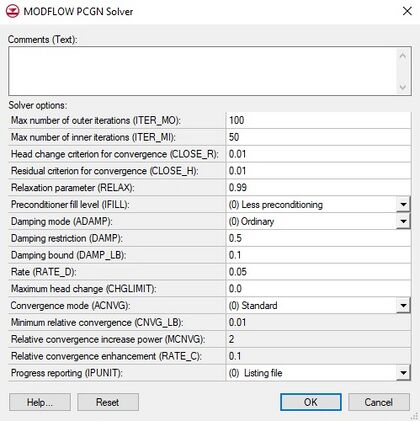GMS:PCGN Package: Difference between revisions
From XMS Wiki
Jump to navigationJump to search
No edit summary |
No edit summary |
||
| Line 5: | Line 5: | ||
* ''Comments (Text)'' – Allows up to 199 characters. | * ''Comments (Text)'' – Allows up to 199 characters. | ||
* ''Max number of outer iterations (ITER_MO)'' – For nonlinear problems, this variable must be set to some number greater than one, depending on the problem size and degree of nonlinearity. If set to 1, then the solver assumes that the problem is linear and the input requirements are greatly truncated. | * ''Max number of outer iterations (ITER_MO)'' – For nonlinear problems, this variable must be set to some number greater than one, depending on the problem size and degree of nonlinearity. If set to 1, then the solver assumes that the problem is linear and the input requirements are greatly truncated. | ||
* Max number of inner iterations (ITER_MI) | * ''Max number of inner iterations (ITER_MI)'' – Set to some number greater than one, depending on the matrix size, degree of convergence called for, and the nature of the problem. | ||
* ''Head change criterion for convergence (CLOSE_R)'' – If set to 1 then the problem will be linear. If set to be greater than 1 then it will be a nonlinear problem. | * ''Head change criterion for convergence (CLOSE_R)'' – If set to 1 then the problem will be linear. If set to be greater than 1 then it will be a nonlinear problem. | ||
* ''Residual criterion for convergence (CLOSE_H)'' – Used as an alternate stopping criterion for the Picard iteration needed to solve a nonlinear problem. | * ''Residual criterion for convergence (CLOSE_H)'' – Used as an alternate stopping criterion for the Picard iteration needed to solve a nonlinear problem. | ||
